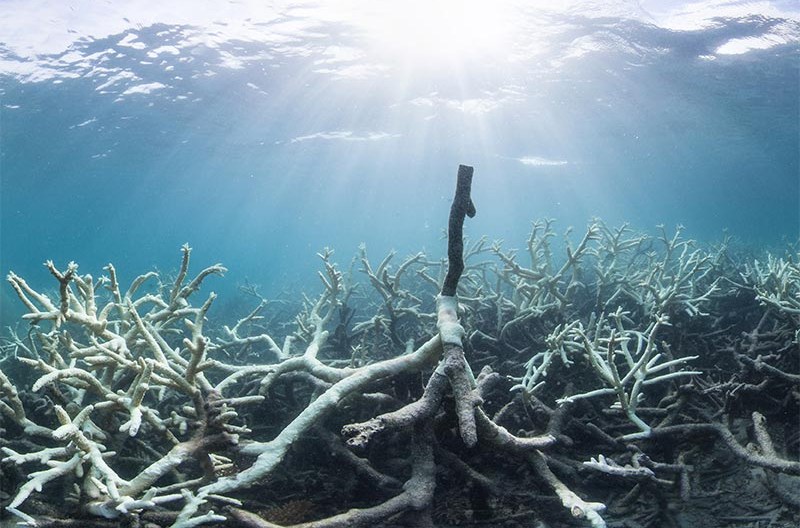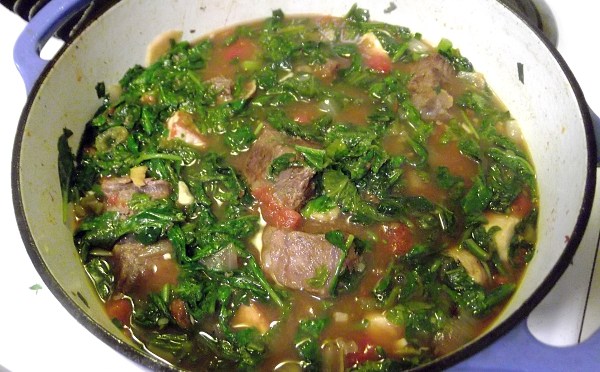Madagascar's Fragile Beauty: A Marine Biologist's Reflections on Conservation and Change

The humid air hit me like a warm embrace as I stepped off the plane in Nosy Be, Madagascar. The sweet, intoxicating scent of ylang-ylang blossoms hung heavy in the air, mingling with the earthy aromas of spices from the bustling market. A kaleidoscope of colors assaulted my senses – vibrant textiles, exotic fruits, and the smiling faces of the Malagasy people. Excitement bubbled within me, but it was tempered by a professional concern. As a marine biologist specializing in coral reef conservation Madagascar, I was here to assess the health of these vital ecosystems, and initial reports painted a concerning picture of the impact of climate change on Madagascar tourism.
Nosy Be: Paradise Found, Paradise Lost?
My first few days were spent submerged in the turquoise waters surrounding Nosy Be. The reefs, once teeming with life, revealed a more complex story. The coral formations themselves were breathtaking – branching Acropora corals reaching for the sun, massive Porites corals forming underwater mountains, and delicate table corals providing shelter for a myriad of creatures. I was mesmerized by the vibrant colors of the reef fish: clownfish (Amphiprioninae) darting in and out of their anemone homes, schools of parrotfish (Scaridae) grazing on algae, and the iridescent flash of angelfish weaving through the coral. The water clarity was exceptional, offering stunning visibility that stretched for what felt like miles.
However, the beauty was marred by a disturbing reality. Patches of ghostly white dotted the landscape – coral bleaching due to rising water temperatures and the insidious creep of pollution. I observed significant bleaching around popular dive sites, likely exacerbated by sunscreen runoff and improper anchoring from tourist boats. My heart sank as I witnessed firsthand the devastating effects of human activity on these fragile ecosystems. It's a stark reminder that Madagascar ecotourism, while bringing much-needed revenue, needs careful management and a commitment to sustainability. This observation emphasizes the need for sustainable diving Nosy Be.
Diving deeper, I also found the reefs littered with plastic debris. Discarded fishing nets, plastic bags, and single-use bottles were entangled in the coral, choking the life out of this underwater paradise. I felt a profound sense of responsibility, a deep urge to do more to protect these precious environments. Read about the impact of tourism on Madagascar's coral reefs.

Rhythms and Realities: The Donia Music Festival
My trip to Nosy Be coincided with the Donia Music Festival, a vibrant celebration of Malagasy culture. The energy was infectious – music pulsed through the streets, the air thrummed with the beat of drums, and dancers in dazzling costumes twirled and leaped with unrestrained joy. The crowd was a melting pot of locals and tourists, all united by the shared experience of music and dance. It was a truly immersive cultural experience, and I found myself swept away by the sheer exuberance of the event. The Donia Music Festival ecofriendly travel initiatives were certainly worth noting.
Yet, even amidst the revelry, my mind kept returning to the environmental challenges facing the island. The influx of tourists, while economically beneficial, undoubtedly puts a strain on the island's resources. Waste management, water usage, and energy consumption all increase during the festival, and the environmental impact is undeniable. How can we reconcile the desire to share the beauty and culture of Madagascar with the need to protect its fragile ecosystems? It's a question that weighed heavily on my mind as I danced beneath the starlit sky.

Pirogue Dreams and Fishing Lines
A leisurely pirogue trip around the island offered a different perspective. The idyllic beaches, fringed with palm trees and lapped by crystal-clear waters, were postcard-perfect. But as we glided past small fishing villages, I was reminded of the local communities' deep dependence on the ocean's health. Their livelihoods are inextricably linked to the abundance of fish and the overall well-being of the marine ecosystem. The need to ensure sustainable fishing practices near Nosy Be has never been more critical.
I spoke with some of the fishermen, learning about their concerns regarding declining fish stocks and the impact of pollution on their catches. They expressed a deep respect for the ocean and a desire to protect it for future generations, but they also faced the daily pressures of providing for their families. It became clear that any conservation efforts must involve and benefit these communities, empowering them to become stewards of their own natural resources. How can we support these communities to promote long term sustainable practices?
Tsingy de Bemaraha National Park: A Realm of Stone and Life
Leaving the coast behind, I ventured inland to Tsingy de Bemaraha National Park, a UNESCO World Heritage site. The landscape was unlike anything I had ever seen – a vast expanse of jagged limestone karsts, sculpted by millennia of erosion into a surreal and breathtaking panorama. The sheer scale of the Tsingy was awe-inspiring, a testament to the power of nature's artistry. The feeling of standing amidst these towering formations was one of both wonder and humility. It is a definitive example of Tsingy de Bemaraha responsible travel.
The park's name, "Tsingy," comes from the Malagasy word meaning "where one cannot walk barefoot," and it's easy to see why. The sharp, knife-edged rocks create a labyrinthine environment, challenging to navigate but teeming with unique biodiversity.
Lemur Treks and Whispers of the Wild
My primary goal in Tsingy was to observe the park’s unique lemur populations. I embarked on several treks, eager to encounter these iconic primates in their natural habitat. I was fortunate enough to spot several groups of Decken's Sifakas (Propithecus deckenii), with their creamy white fur and graceful, sideways leaps. The sounds of their calls echoed through the Tsingy, a chorus of the wild. I also encountered Brown Lemurs (Eulemur fulvus), their intelligent eyes watching me with curiosity. Learning about ethical wildlife tourism practices Madagascar lemurs helps to protect these special creatures.
I was struck by the lemurs' unique adaptations to this harsh environment. Their agile bodies allowed them to navigate the treacherous terrain with ease, and their specialized diets enabled them to thrive on the park's unique flora. However, their survival is threatened by habitat loss due to deforestation and agricultural expansion. The lemurs are a symbol of Madagascar's unique biodiversity.
The sounds of Tsingy are something I will never forget, the wind whistling through the rocks, the chirping of insects, and the calls of the lemurs created an immersive experience. The smells were just as potent, a mix of earthy soil, damp vegetation, and the distinct aroma of lemur musk. All of these sensory experiences created an unforgettable memory.
Balancing Act: Tourism and Conservation in Tsingy
Tsingy de Bemaraha faces the same dilemma as Nosy Be: how to balance the economic benefits of tourism with the need to protect its fragile ecosystem. The park authorities are working hard to implement sustainable tourism practices, such as limiting the number of visitors, promoting responsible trekking, and educating tourists about the importance of conservation. I recommend sustainable tour operators Tsingy de Bemaraha lemur trekking for all those visiting this region.
Local communities are also playing an increasingly important role in conservation efforts. Many residents work as guides, rangers, and park staff, contributing to both the protection of the park and their own economic well-being. Community-based tourism initiatives are helping to ensure that the benefits of tourism are shared more equitably, fostering a sense of ownership and responsibility among local people.
A Taste of Madagascar: Romazava and Cultural Encounters
No trip to Madagascar would be complete without experiencing the local cuisine. I had the opportunity to try Romazava, the traditional beef stew, during my travels. The dish was a symphony of flavors – tender chunks of beef simmered in a rich broth with ginger, garlic, tomatoes, and a medley of local greens. The textures were equally delightful, a comforting blend of tender meat, soft vegetables, and fragrant broth. Romazava recipe authentic Malagasy cooking class options are available to those who wish to replicate this wonderful dish at home.
I also sampled other local delicacies, such as ravitoto (shredded cassava leaves cooked with pork) and koba (a sweet cake made from ground peanuts, rice flour, and honey). Each dish offered a glimpse into the rich culinary heritage of Madagascar, a testament to the island's diverse cultural influences.
The Malagasy people are incredibly warm and welcoming, and I was deeply touched by their hospitality. Their traditions, their music, their art – all reflect a deep connection to the land and a profound respect for their ancestors.

A Call to Action: Protecting Madagascar's Future
My journey through Madagascar was a profound and transformative experience. I witnessed the incredible beauty and biodiversity of this unique island nation, but I also saw the devastating effects of climate change and unsustainable tourism practices. It is our collective responsibility to protect these fragile ecosystems for future generations.
I urge you to travel responsibly and support conservation efforts in Madagascar. Choose ecotourism operators who are committed to sustainability, respect local cultures, and minimize their environmental impact. Reduce your carbon footprint by flying less and opting for eco-friendly transportation options. Support local communities by buying locally made products and participating in community-based tourism initiatives. Consider donating to organizations that are working to protect Madagascar's unique biodiversity.
Let's work together to ensure that the wonders of Madagascar endure for generations to come. There are many responsible tour operators in Madagascar offering these types of experiences.
